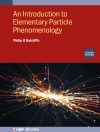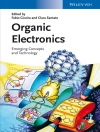The physics of condensed matter, in contrast to quantum physics or cosmology, is not traditionally associated with deep philosophical questions. However, as science – largely thanks to more powerful computers – becomes capable of analysing and modelling ever more complex many-body systems, basic questions of philosophical relevance arise. Questions about the emergence of structure, the nature of cooperative behaviour, the implications of the second law, the quantum-classical transition and many other issues. This book is a collection of essays by leading physicists and philosophers. Each investigates one or more of these issues, making use of examples from modern condensed matter research. Physicists and philosophers alike will find surprising and stimulating ideas in these pages.
Table of Content
Introduction (B. Falkenburg, M. Morrison).- Reduction: On the Success and Limitations of Reductionism in Physics (H. Meyer-Ortmanns).- On the Relation between the Second Law of Thermodynamics and Classical and Quantum Mechanics (B. Drossel).- Dissipation in Quantum Mechanical Systems – Where is the System and Where is the Reservoir? (J. Ankerhold).- Explanation via Microreduction – One the Role of Scale Separation for Quantitative Modelling (R. Hillerbrand).- Emergence: Why is More Different? (M. Morrison).- Autonomy and Scales (R. Battermann).- More is Different…Sometimes: Ising Models, Emergence, and Undecidability (P. Humphreys).- Functional Reduction and Emergence (S. Bangu).- Parts and Wholes:.- Stability, Energence and Part-Whole Reduction (A. Hüttemann, R. Kühm, O. Terzidis).- Between Rigor and Reality: Many-Body Models in Condensed Matter Physics (A. Gelfert).- How Do Quasi-Particles Exist? (B. Falkenburg).- A Mechanistic Reading of Quantum Laser Theory (M. Kuhlmann).
About the author
Prof. Brigitte Falkenburg TU Dortmund, Germany
Prof. Margaret Morrison University of Toronto, Canada.












